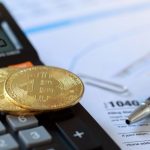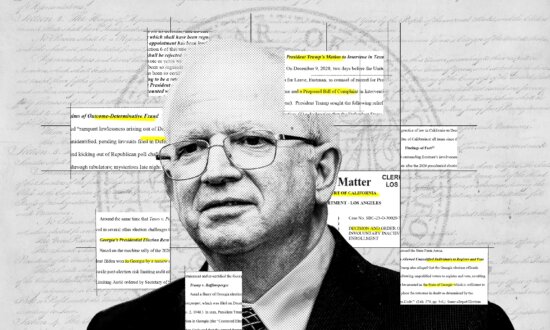Newweek
Consumer price increases remained high last month, boosted by gas, rents, and car insurance, the government said Wednesday in a report that will likely give pause to the Federal Reserve as it weighs when and by how much to cut interest rates this year.
Prices outside the volatile food and energy categories rose 0.4% from February to March, the same accelerated pace as in the previous month. Measured from a year earlier, these core prices were up 3.8%, unchanged from the year-over-year rise in February. The Fed closely tracks core prices because they tend to provide a good read of where inflation is headed.
The March figures, the third straight month of inflation readings well above the Fed’s 2% target, threaten to torpedo the prospect of multiple interest rate cuts this year. Fed officials have recently made clear that with the economy healthy, they’re in no rush to cut their benchmark rate despite their earlier projections that they would reduce rates three times this year.
The figures will likely disappoint the White House as well, with Republican critics of President Joe Biden seeking to pin the blame for high prices on the president and use it as a cudgel to derail his re-election bid. Polls show that despite a healthy job market, a near-record-high stock market and the steady drop in inflation, many Americans blame Biden for high prices.
Chair Jerome Powell has stressed that the Fed’s policymakers need more confidence that inflation is steadily slowing to the Fed’s 2% target. Powell’s stance has elevated the profile of the monthly inflation reports, which could determine when and by how much — or even whether — the Fed will reduce its key rate this year. Rate cuts would lead, over time, to lower borrowing costs for businesses and consumers and could also fuel a stock market rally.
Overall consumer prices rose 0.4% from February to March, also the same as the previous month. Compared with 12 months earlier, prices rose 3.5%, up from a year-over-year figure of 3.2% in February.
The inflation surge that followed the pandemic jacked up the costs of food, gas, rent and many other items. Though inflation has since plummeted from its peak of 9.1% in June 2022, average prices are still well above where they were before the pandemic.
The government’s inflation reports have assumed an unusually high profile this year in both the financial markets and the presidential election. Chair Jerome Powell has made clear that the Fed needs “greater confidence” that inflation is steadily falling back to the central bank’s 2% target before it can begin reducing borrowing costs.
Republican critics of President Joe Biden have sought to pin the blame for high prices on the president and use it as a cudgel to derail his re-election bid. Despite a healthy job market, a near-record-high stock market and a significant drop in inflation from its peak of 9.1%, many Americans blame Biden for the surge in consumer prices that began in 2021. Average prices are still far above where they stood before the pandemic.
Early this year, Wall Street traders had projected that the Fed would cut its key rate up to six or seven times in 2024. In March, Fed officials penciled in three cuts. But persistently high inflation readings in January and February — along with signs that economic growth remains healthy — have led several Fed officials to suggest that fewer rate cuts may occur this year.
Economists have forecast that Wednesday’s report will show that prices rose at a seasonally adjusted 0.3% from February to March, slightly below the previous month’s 0.4% increase, according to a survey of economists by FactSet. That would leave consumer costs 3.4% higher than they were a year ago.
Financial markets and economists will keep a particularly close eye on the March “core” inflation figures, which exclude volatile food and energy costs. Core prices typically provide a better sense of where inflation is headed. Economists have predicted that core prices also slowed to a 0.3% increase from February to March, down from 0.4% from January to February.
A rise in gas prices was a likely key source of last month’s inflation. The average national price of a gallon of gas rose about 5% to $3.50. Prices for services — everything from car insurance and hotel rooms to restaurant meals and entertainment — are also believed to have risen.
Rents and the cost of home ownership have also both surged since the pandemic. The cost to rent a new apartment has actually declined in most big cities — a result, in part, of a wave of new apartment buildings being completed. But the government tracks both new and existing rents, and the decline in newer rents is only slowly feeding into the government’s data.
Rents rose 5.8% in February from a year earlier, well above the 3% to 4% pace that was typical before the pandemic but far below a peak of 8.8% a year ago.
The costs of new and used vehicles, though, are believed to have dropped in March and are expected to hold down inflation in the months ahead. Cars and SUVs still cost much more than they did before the pandemic. But as automakers increase production and replenish dealer inventories, buyers are able to get some deals again.
Laura Rosner-Warburton, an economist at MacroPolicy Perspectives, said that only about 16% of new cars are now sold above the manufacturer’s recommended price, down from nearly half in July 2022.
“The conditions have really shifted in the new-vehicle market,” she said. “The supply has improved. I think that’s an area where we just haven’t seen much deflation at all, and we will.”
The costs of groceries, having skyrocketed in 2022 and early 2023, are rising much more slowly now. Food prices were up just 1% in February from a year earlier. Egg prices, though, may jump, with avian flu having re-emerged and forced egg producers to reduce the size of their flocks.
Hiring ramped up last month and the unemployment rate fell to a low 3.8% from 3.9%. A report on manufacturing also showed that factory output expanded after more than a year of contraction.
Such signs of economic vigor have also complicated the prospect of Fed rate cuts, which typically occur when the economy stumbles. With growth healthy, some economists have asked, why cut rates at all? A strong economy also means that the Fed’s policymakers can take their time to consider when and by how much to reduce borrowing costs for consumers and businesses.
At a news conference last month, Powell said that robust hiring, on its own, wouldn’t require the Fed to delay rate cuts. He noted that even though job gains were strong last year, inflation still tumbled thanks in large part to a surge of available workers, mostly from increased immigration.
“In and of itself, strong job growth is not a reason for us to be concerned about inflation,” the Fed chair said.
Some other policymakers, though, said that recent data had given them pause.
“It’s much too soon to think about cutting interest rates,” Lorie Logan, president of the Federal Reserve Bank of Dallas, said last week.











